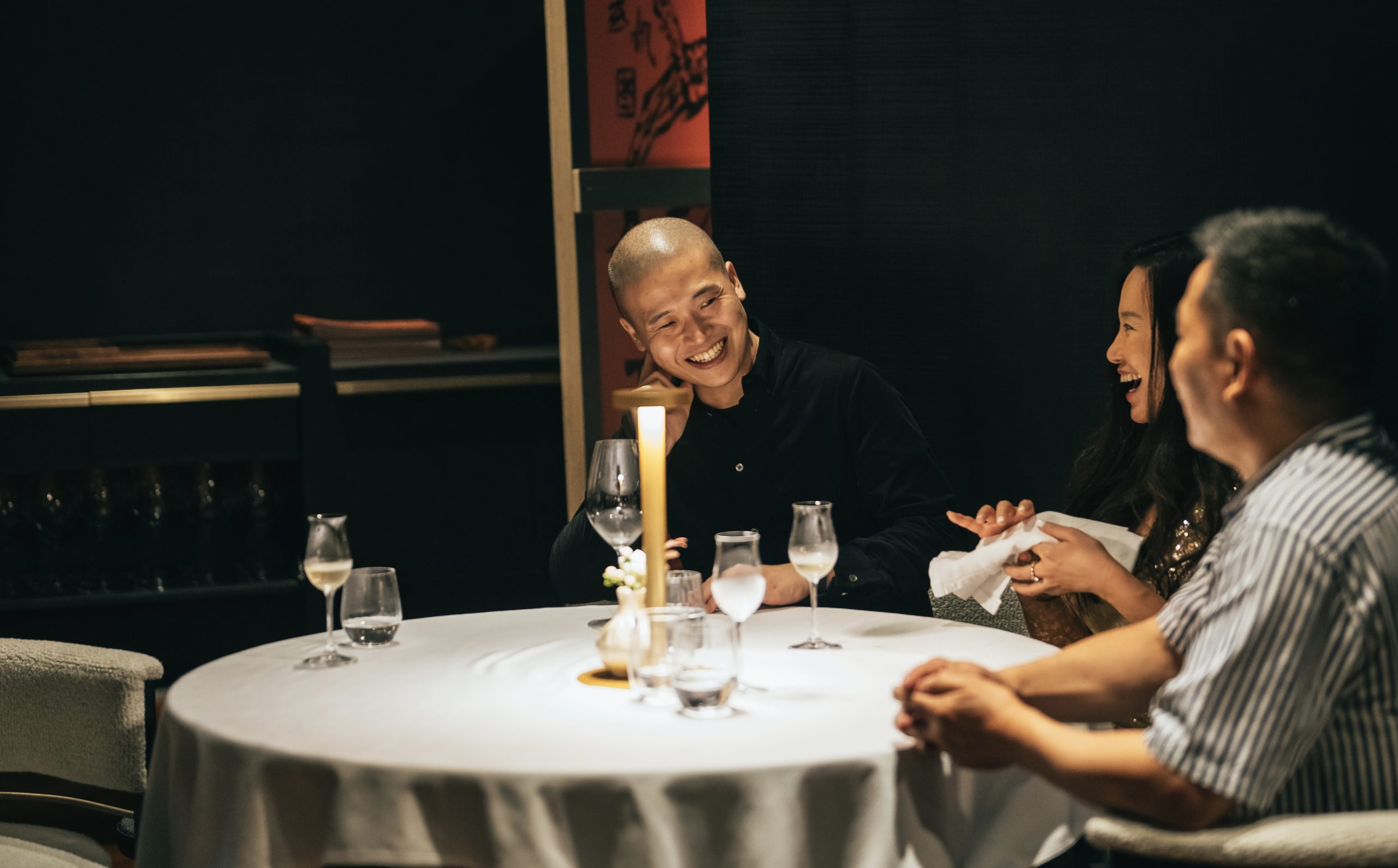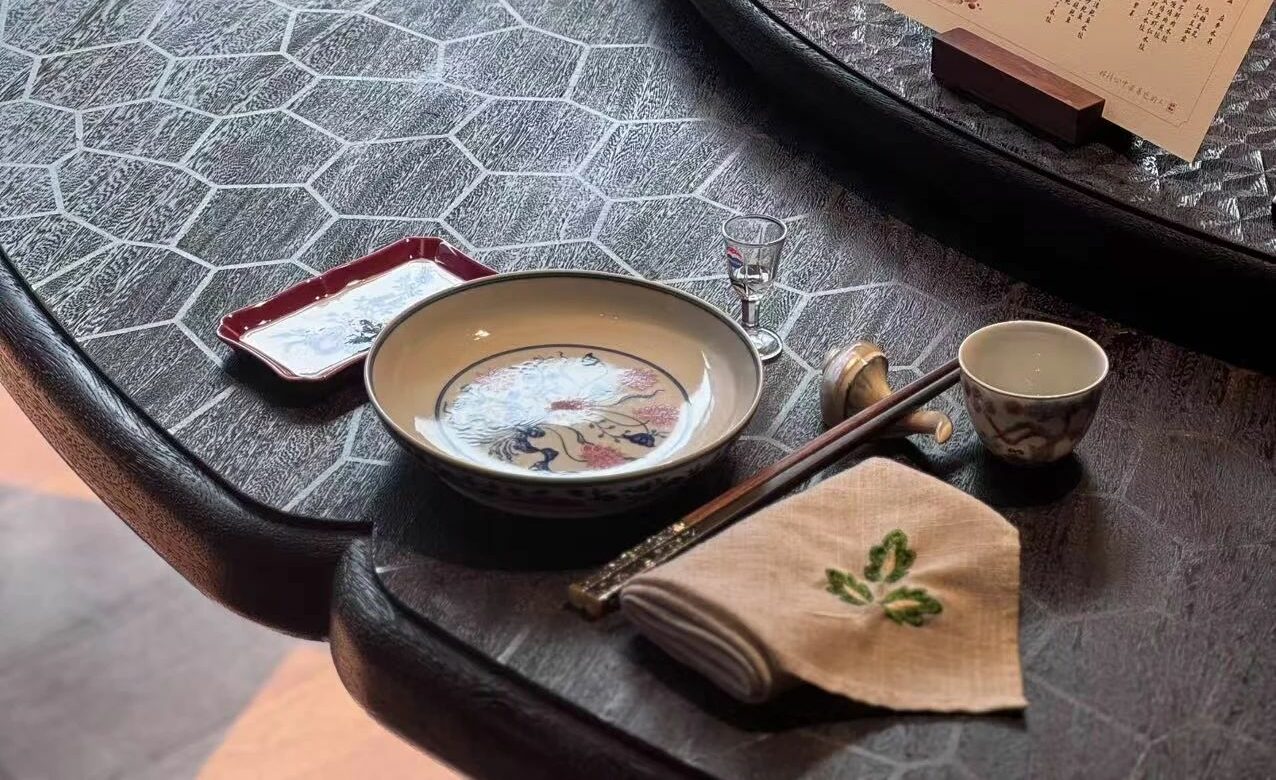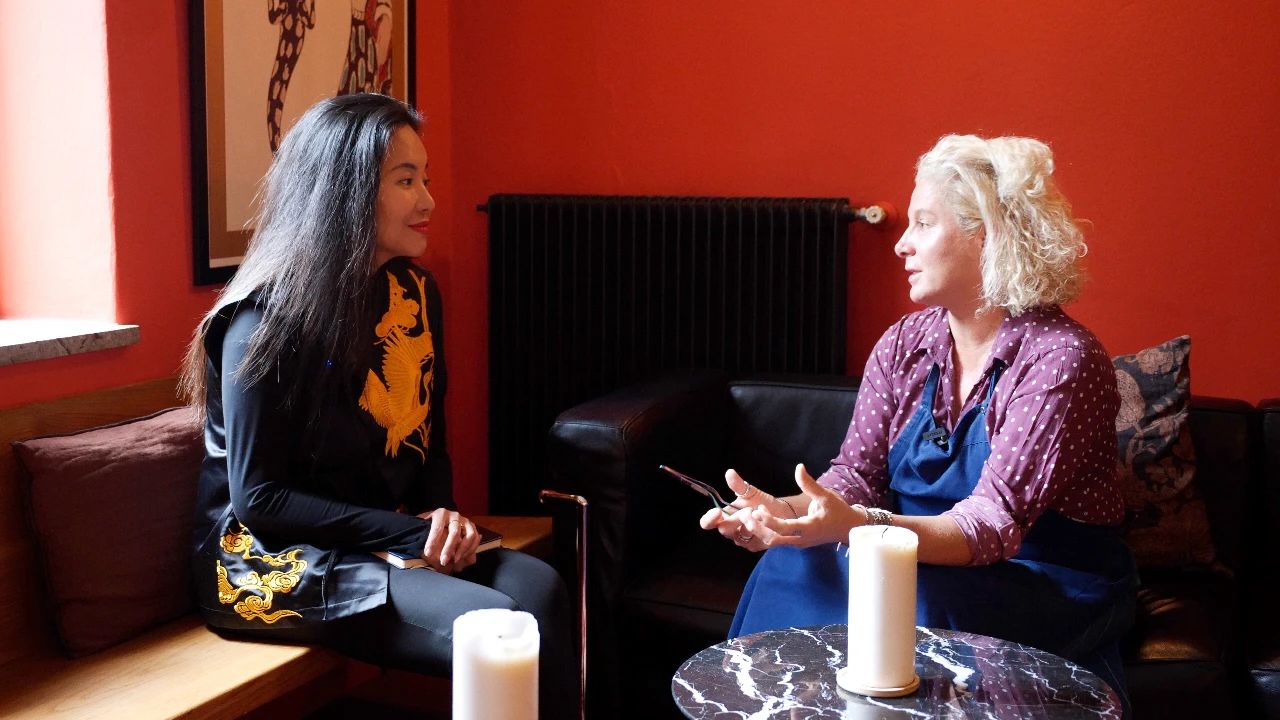The new generation of chefs has begun to embrace their own land. They have learnt Western techniques, but have decided to unleash their talents on the canvas of Chinese cuisine. After winning a Michelin star for Ling Long Beijing, Jason Liu, at the age of 30, once again garners a star for the restaurant’s new venue in Shanghai, the most challenging city for top-notch restaurants in China, after opening only for few months. In my mind, the two spots are not on the same level any more.
@Jocelyn華姐的TastyTrip Youtube
I visited Ling Long Beijing more than two years ago, and now the restaurant’s new outlet in Shanghai is housed in Waldorf Astoria’s 120-year-old heritage building at the forefront of the Bund. Besides the superior location, Ling Long Shanghai has started out with a full upgrade in interior design and artwork display. Since its opening this year, Ling Long has received wide acclaim and become very difficult to book even at a time when Shanghai’s high-end restaurant industry has not yet fully recovered from covid.
With doubts in mind, I originally planned to visit Ling Long Shanghai when it launches a second iteration on menu. But a Singaporean chef friend came to visit me and specifically asked for Ling Long, and the restaurant happened to have a reservation just cancelled. We had no reason not to go. I know Ling Long Beijing is delicious, but there is room for improvement in terms of completion. The outstanding performance by Ling Long Shanghai was completely out of my expectation.
The appetizer features a pea pod enveloping charred sweet peas, accompanied by caviar and smoked scamorza cheese. The smoky, sweet, and savoury flavours of the peas are enhanced by the addition of caviar, creating a multi-layered experience. The second appetizer is a king crab leg poached with fermented grain sauce and finished with butter and cream, placed on top of tomato water and celery oil, and garnished with tomato jelly and shiso flowers. As you bite into the crab meat, it yields a luxurious and creamy burst of butter that exudes a robust tang. The tomato water and celery oil add a refreshing twist, while the shiso flowers bring a hint of Japanese influence to the dish.
 Pea Pod
Pea Pod
One of Jason’s signature dishes is a soup made with 3-year-old Tangshan black-footed chicken, dry-aged for three months to make the soup along with fresh chicken and Yunnan wild matsutake mushrooms. Instead of using fresh chicken to concentrate the soup, Jason takes a different approach by first curing the chicken and then making the soup, which requires a considerable amount of time and effort. Jason mentioned that he is still researching and developing better methods for ageing the chicken, as he continues to refine his soup creations.
Next up is a flower-like dish featuring lobster, with a layer of jelly made from Chinese yellow wine covering the marinated lobster. This allows the jelly to easily attach to the lobster, and is accompanied by radish, herbs and vegetables. The lobster is slow-cooked at low temperatures to perfectly cut off the rawness. Looking at the photo of this dish piqued my curiosity about its composition, and I was pleased to find that the flavours are actually well blended. The plating could be simpler, if I had to be picky about the dish.
 Lobster
Lobster
Anotherone is the char-grilled palm heart, served with grilled scallop and a sauce made with caviar, finger lime, and Chinese pine nut, topped with dried scallop and shredded palm heart. The palm heart comes from Xishuangbanna (an autonomous prefecture for Dai people in Yunnan) and has a texture somewhere between wild rice stem and bamboo shoot. The crunchy nuts and caviar in the sauce give this dish multiple layers of mouthfeel and a strong umami. Personally I’m inclined to think that scallops can make a fancy dish with very little effort. However, in this dish, the presentation is spot-on.
Fish maw stewed withhomemade Parmesan is topped with cheese crisps and coupled by celery and rice cake. The sweet, juicy celery from Majiagou in Shandong province has no tough strings, while the rice cake is similar to Italian gnocchi in texture. An Italian-inspired Chinese dish brimming with umami that’s hard to resist, this showcases chef’s understanding of fusion cuisine.
 Char-grilled Palm Heart
Char-grilled Palm Heart
Thekinki fish is prepared by grilling and brushing a layer of sand ginger oil on surface to enhance the flavour. Only the sauce is a bit overwhelming, making it somewhat plain compared to other dishes. Ling Long’s Oyster & Beef is a signature item. The A5 Wagyu beef from Shandong province is deep-fried, seared and finally grilled to produce a crispy exterior and tender interior. The beef is marinated with a bold seasoning, with no need for additional oyster sauce to enhance the flavour. This dish is a no-brainer when it comes to deliciousness.
The vegetable fried rice features xcdc, bok choy, water chestnut, 5J ham, accompanied by Taiwan’s nest fern, clove fish cake, and craft brew soy sauce tailor-made by Kikkoman. A touch of Taiwan is beautifully added to this classic Shanghainese fare.
 Wuchang rice from Northeast China
Wuchang rice from Northeast China
The dessert features three different types of honey presented in the form of airy cake, molten lava, and crispy flakes. To enhance the experience, a small speaker is provided to play the buzzing sound of bees, which makes the corners of the mouth turn up. After the refreshing jasmine bird’s nest, a nostalgic treat is presented by arousing childhood memories through the scent of osmanthus. The coin purse adds extra fun to the interactive dining experience. Hidden within the variety of Western and Chinese desserts are flavours reminiscent of traditional Chinese sweets. After all, going out to eat should always be a joyful occasion.

Being a young chef, Jason is precise in time control and cooking techniques, allowing the ingredients to shine at their best. The overall flavour portfolio is slightly sweet, which is quite compatible with the Shanghai palate. Despite that he is still exploring his own flavour type, Ling Long is a good restaurant with his ingenious creations.
At Ling Long Shanghai, thecuisine is highly completed and layered, the service smooth and personal. Compared with Ling Long Beijing, the difference is clear. Only the seasoning can be a bit more daring. Experimenting with more styles to spark diversity is also worth trying. Jason is very young, and time is the last thing he lacks.
Jason Liu is a chef with almost zero bad reviews. He is sincere, humorous and has a positive interaction with diners. He is willing to listen to others, and conversations with him can be direct, honest and specific. Wearing the Michelin Young Chef Award and Black Pearl’s Young Chef of the Year, and having been awarded oneMichelin star for two consecutive years, he is not overly ambitious, and he is one of the few chefs today who rarely leaves the kitchen and focuses on serving his customers. His understated and calm persona is a clear indication of how different he is.
It’s no exaggeration to say that Ling Long Shanghai and Beijing are two completely different restaurants. In Shanghai, where fine dining is still in the doldrums, Ling Long is bucking the trend and breaking the spell of new restaurants’s fleeting three-month popularity. For Jason, Ling Long is an honour as well as a presence that has brightened up Waldorf Astoria’s signboard.
Already a hotshot chef at such a young age, Jason’s future is not one to worry about. Any comments about him now would just be icing on the cake.
 Jason Liu and the Author
Jason Liu and the Author
Photo: Ye Shi










